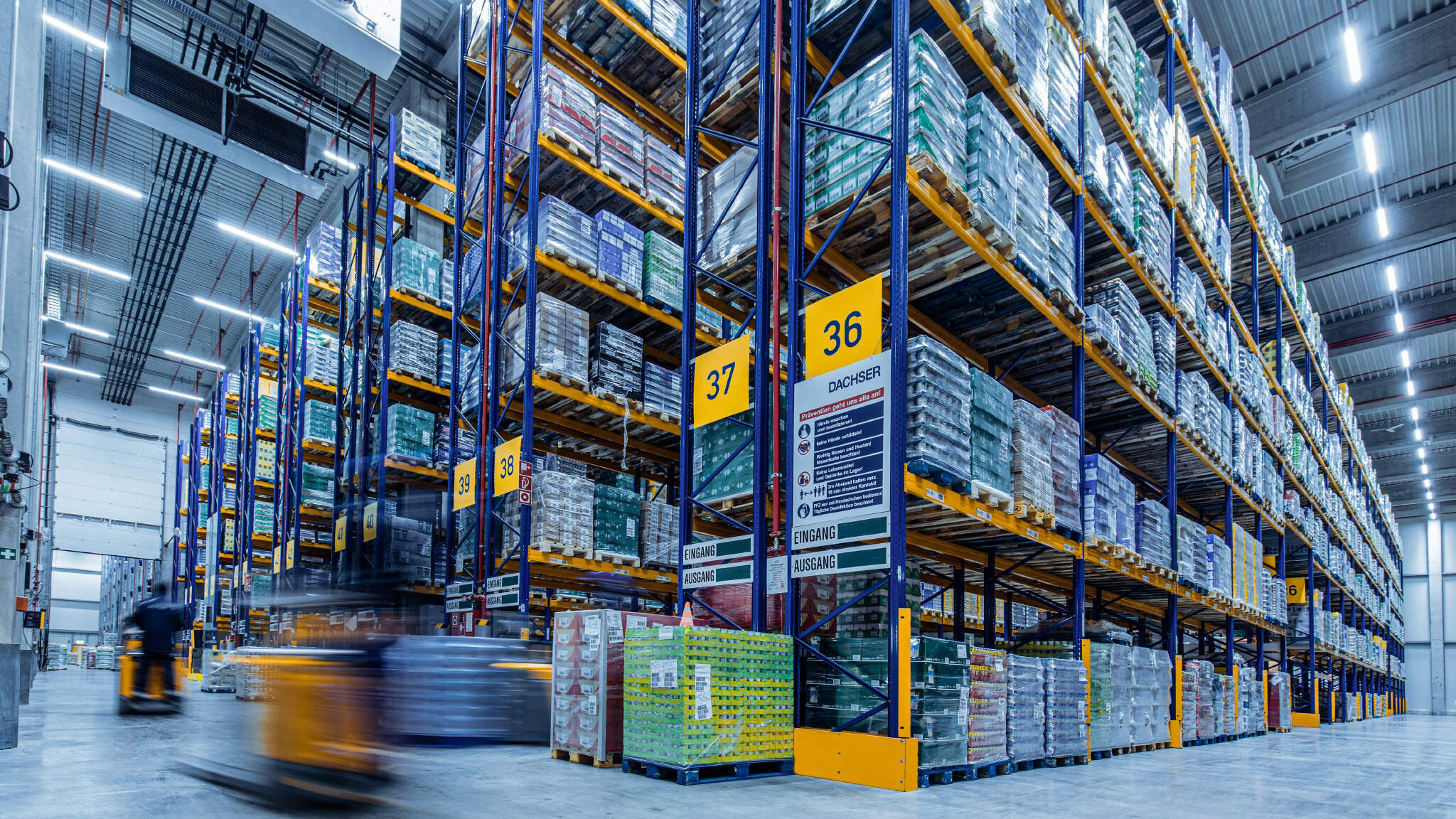Ready to turn insight into action?
We help organisations transform ideas into measurable results with strategies that work in the real world. Let’s talk about how we can solve your most complex supply chain challenges.

In the dynamic retail markets of Australia and New Zealand, General Managers (GMs) of Supply Chain are at the forefront of driving efficiency, responsiveness, and customer satisfaction. As consumer expectations continue to rise, and as the retail landscape becomes increasingly competitive, the pressure on supply chain leaders to deliver results has never been greater. This environment demands not just operational excellence but also strategic foresight.
For retail companies in these regions, the supply chain is more than just a means to move products from suppliers to customers—it's a critical differentiator that can make or break a business. GMs who recognise the strategic importance of their supply chain are investing in systems that do more than just keep operations running; they are investing in systems that drive competitive advantage.
This article explores how GMs of Supply Chain in retail companies across Australia and New Zealand can leverage strategic investments in three key areas: Advanced Planning Systems, Purchasing & Inventory Management Systems, and Warehouse & Order Management Systems. Each of these areas presents unique opportunities to enhance operational efficiency, improve customer satisfaction, and secure long-term competitiveness.
1. Advanced Planning Systems: Navigating Complexity with Precision
Advanced Planning Systems (APS) are essential for managing the complexities of modern retail supply chains. These systems allow GMs to integrate and analyse vast amounts of data from various sources, enabling precise forecasting, demand planning, and inventory optimisation. Here's how APS can transform the supply chain for retailers in Australia and New Zealand:
1.1. Enhancing Demand Forecasting
In the retail industry, demand forecasting is critical to ensuring that the right products are available at the right time. APS enable GMs to leverage historical data, market trends, and real-time analytics to predict future demand with greater accuracy. By incorporating advanced algorithms and machine learning, these systems can identify patterns and anticipate shifts in consumer behaviour, allowing retailers to stay ahead of the curve.
For example, a retailer in Australia may use APS to anticipate increased demand for seasonal products, such as swimwear in the summer or winter coats during colder months. By accurately forecasting demand, the retailer can adjust inventory levels accordingly, reducing the risk of stockouts or overstock situations.
1.2. Optimising Inventory Levels
Maintaining optimal inventory levels is a delicate balance. Too much inventory ties up capital and increases storage costs, while too little inventory can lead to stockouts and lost sales. APS provide GMs with the tools to achieve this balance by optimising inventory levels based on demand forecasts, lead times, and service level targets.
In New Zealand, where retail markets can be affected by geographic isolation and variable shipping times, APS can help GMs manage inventory more effectively by considering these factors. This ensures that products are available when and where they are needed, without the risk of excess inventory.
1.3. Integrating Supply Chain Processes
One of the key benefits of APS is their ability to integrate various supply chain processes, from procurement and production planning to logistics and distribution. This integration enables GMs to align supply chain operations with broader business objectives, improving overall efficiency and responsiveness.
For instance, a retailer operating in both Australia and New Zealand can use APS to synchronise supply chain activities across both countries, ensuring a consistent customer experience regardless of location. By aligning planning processes with real-time data and market conditions, GMs can make informed decisions that drive competitive advantage.
2. Purchasing & Inventory Management Systems: Building Resilient Supply Chains
Purchasing and inventory management are critical components of a retail supply chain, directly impacting cost efficiency, product availability, and customer satisfaction. Strategic investments in purchasing & inventory management systems offer GMs the opportunity to build resilient, agile supply chains capable of withstanding disruptions and adapting to changing market conditions.
2.1. Streamlining Supplier Management
Effective supplier management is essential for maintaining a smooth and cost-effective supply chain. Purchasing & inventory management systems enable GMs to streamline supplier relationships by providing visibility into supplier performance, lead times, and pricing. This visibility allows GMs to make data-driven decisions when selecting suppliers, negotiating contracts, and managing risks.
In the context of Australia and New Zealand, where supply chains can be influenced by factors such as distance, currency fluctuations, and trade agreements, having a robust supplier management system is particularly important. These systems help GMs identify the most reliable and cost-effective suppliers, reducing the risk of disruptions and ensuring a steady flow of goods.
2.2. Enhancing Inventory Visibility
Inventory visibility is crucial for effective supply chain management. Without clear visibility into inventory levels across the supply chain, GMs cannot make informed decisions about replenishment, allocation, or distribution. Purchasing & inventory management systems provide real-time visibility into inventory levels, helping GMs monitor stock across multiple locations, including warehouses, stores, and distribution centres.
For retailers with operations in both Australia and New Zealand, this visibility is especially valuable. It allows GMs to manage inventory across borders, ensuring that products are available where they are needed most. This can lead to improved customer satisfaction and reduced costs associated with excess inventory or emergency shipments.
2.3. Automating Replenishment Processes
Automating replenishment processes is another key benefit of investing in purchasing & inventory management systems. These systems can automatically generate purchase orders based on predefined rules and real-time inventory data, reducing the risk of human error and ensuring that inventory levels are maintained at optimal levels.
For example, a retailer in New Zealand might use an automated replenishment system to ensure that popular items are consistently in stock, even during peak shopping periods. By automating these processes, GMs can focus on more strategic tasks, such as supplier negotiations or market analysis, while the system handles routine ordering.
3. Warehouse & Order Management Systems: Delivering Operational Excellence
Warehouse and order management are at the core of a retail supply chain's ability to deliver products to customers efficiently and cost-effectively. Investments in warehouse & order management systems can significantly enhance operational excellence, leading to faster delivery times, reduced costs, and improved customer satisfaction.
3.1. Optimising Warehouse Layout and Operations
The layout and operations of a warehouse play a crucial role in determining the efficiency of order fulfillment. Warehouse management systems (WMS) provide GMs with the tools to optimise warehouse layouts, streamline picking and packing processes, and reduce the time it takes to fulfill orders.
In the context of Australian and New Zealand retail, where geographic distances can be vast, optimising warehouse operations is particularly important. A well-organised warehouse reduces the time it takes to locate and ship products, leading to faster delivery times and lower transportation costs. This, in turn, enhances customer satisfaction and boosts the retailer's competitive position.
3.2. Enhancing Order Accuracy and Speed
Order accuracy and speed are critical factors in the customer experience. A warehouse & order management system can help GMs ensure that orders are picked, packed, and shipped correctly and on time. These systems use advanced technologies such as barcode scanning, RFID, and automated picking systems to reduce errors and increase order accuracy.
For retailers in Australia and New Zealand, where customers have high expectations for fast and accurate delivery, these systems are invaluable. By investing in technology that enhances order accuracy and speed, GMs can differentiate their companies in a crowded market and build customer loyalty.
3.3. Leveraging Data for Continuous Improvement
Warehouse & order management systems generate vast amounts of data that can be used to drive continuous improvement. GMs can leverage this data to identify bottlenecks, measure performance against key metrics, and implement changes that enhance efficiency and reduce costs.
For example, a retailer in Australia might analyse data from their WMS to identify which products are frequently out of stock or slow-moving. With this information, the GM can adjust inventory levels, reconfigure the warehouse layout, or renegotiate supplier terms to improve overall efficiency. By continuously optimising operations based on data insights, retailers can maintain a competitive edge in a rapidly changing market.
Driving Competitive Advantage Through Strategic Investment
In the retail markets of Australia and New Zealand, the supply chain is a powerful tool for driving competitive advantage. By strategically investing in advanced planning systems, purchasing & inventory management systems, and warehouse & order management systems, GMs of Supply Chain can transform their operations, enhance customer satisfaction, and secure long-term success.
These investments are not just about keeping up with the competition; they are about staying ahead of it. Advanced systems provide the agility, precision, and insight needed to navigate the complexities of modern retail, allowing GMs to make informed decisions that drive growth and profitability.
For GMs of Supply Chain in retail, the message is clear: the future of retail success lies in strategic investment in the right systems. By embracing these technologies, retailers in Australia and New Zealand can build resilient, efficient, and customer-centric supply chains that deliver lasting competitive advantage.
----
By investing in these advanced systems, GMs of Supply Chain in retail companies across Australia and New Zealand can ensure that their businesses are not only prepared for the challenges of today but are also well-positioned to thrive in the future.
Ready to turn insight into action?
We help organisations transform ideas into measurable results with strategies that work in the real world. Let’s talk about how we can solve your most complex supply chain challenges.








